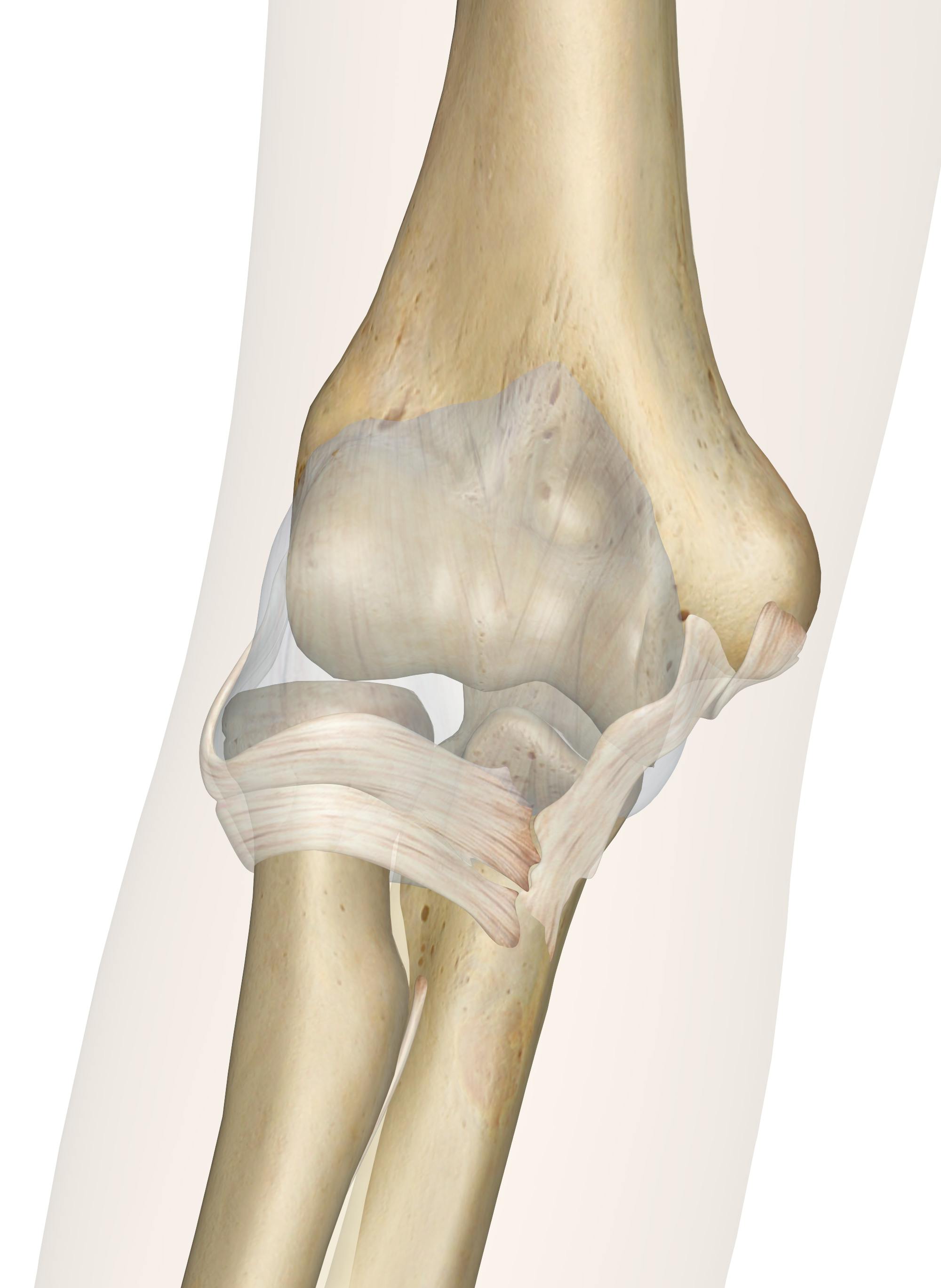The elbow joint is a complex hinge joint formed between the distal end of the humerus in the upper arm and the proximal ends of the ulna and radius in the forearm. The elbow allows for the flexion and extension of the forearm relative to the upper arm, as well as rotation of the forearm and wrist.
The rounded distal end of the humerus is divided into two joint processes — the trochlea on the medial side and the capitulum on the lateral side. The pulley-shaped trochlea forms a tight joint with the trochlear notch of the ulna surrounding it.mycontentbreak On the lateral side, the concave end of the head of the radius meets the rounded, convex capitulum to complete the elbow joint. The loose union of the capitulum of the humerus and the head of the radius allows the radius to pivot as well as flex and extend. The pivoting of the radius allows for the supination and pronation of the hand at the wrist.
Like all other synovial joints, a thin layer of smooth articular cartilage covers the ends of the bones that form the elbow joint. The joint capsule of the elbow surrounds the joint to provide strength and lubrication to the elbow. Slick synovial fluid produced by the synovial membrane of the joint capsule fills the hollow space between the bones and lubricates the joint to reduce friction and wear.
An extensive network of ligaments surrounding the joint capsule helps the elbow joint maintain its stability and resist mechanical stresses. The radial and ulnar collateral ligaments connect and maintain the position of the radius and ulna relative to the epicondyles of the humerus. The annular ligament of the elbow extends from the ulna around the head of the radius to hold the bones of the lower arm together. These ligaments allow for movement and stretching of the elbow while resisting dislocation of the bones.
Being a hinge joint, the only movements allowed by the elbow are flexion and extension of the joint and rotation of the radius. The range of motion of the elbow is limited by the olecranon of the ulna, so that the elbow can only extend to around 180 degrees. Flexion of the elbow is limited only by the compression soft tissues surrounding the joint.
Because so many muscles originate or insert near the elbow, it is a common site for injury. One common injury is lateral epicondylitis, also known as tennis elbow, which is an inflammation surrounding the lateral epicondyle of the humerus. Six muscles that control backward movement (extension) of the hand and fingers originate on the lateral epicondyle. Repeated strenuous striking while the muscles are contracted and against force — such as that occurring with the backhand stroke in tennis — causes strain on the tendinous muscle attachments and can produce pain around the epicondyle. Rest for these muscles will usually bring about recovery.

